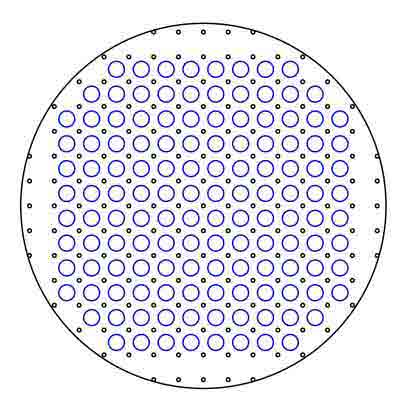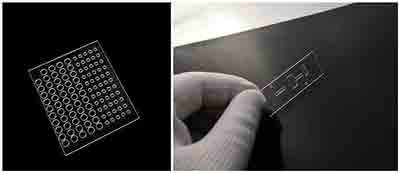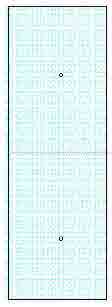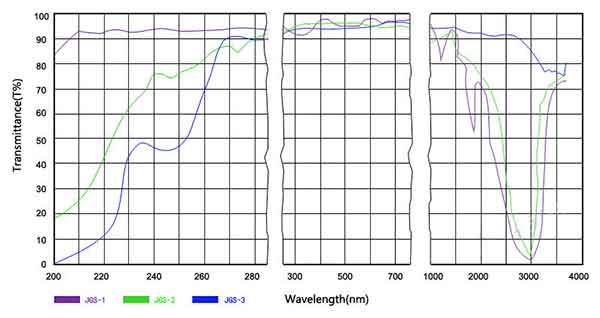I'm looking for 10-20 diced fused silica samples with a diameter of 15 mm and thickness of 2 mm, with both sides polished, with as small an absorption coefficient for the optical range as possible.
Large Selection of Fused Silica Wafers
A postdoc fabricating microfludic channels and biosensors using  fused silica item #1013 gave us the following testimonial.
fused silica item #1013 gave us the following testimonial.
We're happy with the quality of what we're getting and lucky to work with you!
A researcher from a US University requested the following fused silica specs:
Please reference #269981 for pricing.
Below are just some of the fused silica wafers that we have in stock. We have smaller and larger dimaeters with very thick and very thin availble. Please ask us about our deposition services.
You can buy direct here and save!
Get Your Quote FAST! Or, Buy Online and Start Researching Today!
What other Fused Silica Specs do Researchers Ask For?
Researcher:
I was looking for 10 -20 diced fused silica samples 20 mm x 20 mm with a thickness of 1 mm.
We Quoted:
Diameter: 20 x 20mm
Thickness: 1+/-0.025mm
Surface: Double Side Polished
Grade: JGS1
OH Content: <1,200ppm
Warp: <30um
Bow: <30um
TTV: <10um
Roughness: <1nm
Scratch/Dig: 60/40
Can you make 49x49x1mm fused silica wafer?
We Quoted
49x49x1mm, DSP
1 Corner chamfered
UV Grade(JGS1) and
Standard Grade (JGS2)
What Fused Silica Substrates Are Used to Make FS Mirror?
Fused Silica Mirrors -coated with metallic mineral on one side of the wafer.
Fused Silica Wafer UV Grade(JGS1)
2 inch diameter and (2 mm and 2.5 mm thicknesses)
Optical specifications:
Surface Flatness: wave/4 (PV) @633 nm
Surface irregularities < 5 nm
Scach-dig: 60/40
Gold Coated Fused Silica
We can deposit gold onto fused silica wafers. Recently a research client asks the following:
The material of wafer: Fused Silica
Thickness: 100um
Diameter: 50.8mm
DSP
In addition, I want a partial coating on those thin wafer.
Metalization: Gold (Au)
Mask: Diameter: 0.5...1.5 mm circular area (blue) coated with gold and with 3.3mm pitch between coated areas.

Please ignore those black circles and the drawing is not a true scale. I would update it.

Fused Silica Flexible Electronics Applications
Researchers have used the following fused silica JGS2 wafer for their flexible electronics research. Reference ONL29661.
100mm 500um DSP 60/40 Scratch/Dig
What is Fused Silica JGS2 UV transmission Rate?
A researcher asked:
I noticed on the website that there are 5 types of 4inch wafer options for JGS2 optical grade fused silica wafers varied by their thickness. Usually thicker wafers would have a lower UV transmission rate, but they're all labeled as JGS2. may I ask if they have exactly the same UV transmission rate here? If not, what's their own specifications?
UniversityWafer Replies:
Firstly, JGS2 is not UV transmitted. It works on the Visible and infrared wavelengths. It's transmittance reaches its peak at 270nm wavelength. The one that is UV transmitted is JGS1.
Secondly, it's true when the material gets thicker, the UV transmittance decreases. However, we are not equipped with the intrusment that can detect the transmission rates for different thicknesses.
What we can get is the officially released material specifications. In that, it does not specify the UV transmission rate for various thicknesses.
Finally, according to our knowledge on other materials, such as Borofloat 33, transmission rate does not decrease so drastically when the wavelength is short.
The Researcher Replies
Thanks a lot, I really appreciate that. So here're my questions:
1. The UV wavelength we will be using is 352nm, in UV-A range (315-400nm). We do not need the wafer to be transparent for UV-B (280-315nm) or UV-C(100-280nm) range. I could be misinformed, but I checked that for JGS1, JGS2 and JGS3, the UV transmission rates for wavelength 300~400nm are all >90%. Will JGS2 and 3 be enough for our application (UV wavelength 352 nm)? If not, are there any JGS1 in stock and could be customized?
2. As you mentioned in the previous email, borofloat 33 could maintain a stable UV transmission rate no matter what thickness it is. Can I ask what's the UV transmission rate for this type of material you mentioned? If it's possible, can we also get a quote for it?
What we want are optically transparent wafers that could reach at least 90% UV transmission rate for 352 nm UV-A wavelength. The thickness of the wafer isn't our priority to consider, but it would be prefered if the wafer is thicker (in case it breaks during assembly). If you could provide us any other alternative materials, that would be really appreciated too!
Thank you so much for your time, let me know if you have any questions or further information I need to provide. Looking forward to hearing from you!
As client will be using UV-B (280-315nm) only and specifically at 352nm, JGS2 is more than enough for this range. As its transmittance curve shows, transmission rate of JGS2 reaches 90% at 270nm. And of course JGS1 is also workable at this range, but more expensive. So, I think JGS2 may serve the client well.
The reason why I mention BF33 is not because it is UV transmitted. BF33 does not work on the UV range. Why I mention it is actually because this is the only brand/grade I found with an official transmittance curve depicting transmission rates at different thicknesses. However, the theory holds as the shorter the wavelength, the higher the energy of the light/wave, and thus the better the transmittance. To be clearer, glass thickness has a smaller influence on the UV range than on the visible range than on the IR range.

We quoted you several JGS2 spec's with 100mm diameter and different thicknesses this year, you may suggest one that the client finds suitable.
What Are The Mechanical Properties of Fused Silica Substrates?
Fused silica, also known as fused quartz, is a high-purity, non-crystalline form of silica. It offers a combination of excellent optical and mechanical properties, making it suitable for a wide range of applications, especially in the optics and semiconductor industries. Here are the mechanical and optical properties for fused silica substrates that are 76.2mm in diameter and 550 microns thick:
Mechanical Properties:
- Density: Approximately 2.2 g/cm³.
- Young's Modulus (E): Typically around 72 GPa (gigapascals), indicating its stiffness.
- Poisson's Ratio: About 0.17, which is the ratio of the relative contraction strain (transverse, lateral, or radial strain) to the relative extension strain (or axial strain).
- Hardness: The Mohs hardness is around 7, making it relatively hard and resistant to scratching.
- Tensile Strength: Typically around 48 MPa (megapascals). Surface flaws can significantly reduce the actual tensile strength.
- Compressive Strength: Exceeds 1 GPa, much higher than its tensile strength.
- Coefficient of Thermal Expansion: Very low, around 0.55 x 10⁻⁶/°C, making it stable over a wide temperature range.
Optical Properties:
- Refractive Index: Approximately 1.4585 at 589 nm (visible wavelength). The value slightly changes across different wavelengths.
- Transmission: Fused silica is highly transparent in the ultraviolet (UV) to infrared (IR) range. It has an excellent transmission rate, often exceeding 90% in the UV to near-IR range.
- Abbe Number: About 67.56, indicating relatively low dispersion.
- Birefringence: Being isotropic, fused silica does not exhibit birefringence when it is not under stress.
- Absorption: Fused silica has minimal absorption in the UV to near-IR range, but absorption increases in the deep-UV and far-IR ranges.
It's essential to recognize that the exact properties can vary based on the specific manufacturing process and any potential dopants or impurities in the fused silica. If you're considering using fused silica for a particular application, it's always a good idea to consult with the manufacturer or supplier for specific property values.
Fused Silica Low Thermal Conductivity Used to Fabricate MEMS Devices
A PhD researching Micro-Electro-Mechanical Systems (MEMS) requested a quote on fused silica substrates for their project.
We're looking at this as a possible substrate for some MEMS devices that require thin membranes to be constructed. We normally do it with Si wafers and back-etch through the wafer. We are interested in silica for its low thermal conductivity.
Reference ID #007 for specs and pricing.
Testimonial Thick Fused Silica Quality
An Optical Sciences Assistant Professor requested a quote for more quality wafers that they purchased in the past.
We have found that Part ID 1943 (100 mm-diameter, 1 mm-thick fused silica wafers) are excellent for some of our experiments. They have low flatness and are very smooth compared to most wafers we've seen over the years. Are the wafers with part ID 1943 that are currently on your website from the same manufacturer as the ones we purchased in December?
Answer: Yes! Same plant makes them!
Reference #273119 for specs and pricing
What are Fused Silica Wafers?
Fused silica wafers are thin discs of high-purity silicon dioxide that are used in the production of electronic devices, such as semiconductor chips. Fused silica, also known as fused quartz, is a highly pure and transparent form of silicon dioxide that is made by melting naturally occurring quartz sand at high temperatures. Fused silica wafers are highly resistant to heat, chemicals, and mechanical damage, making them ideal for use as a substrate material in the production of electronic devices. They are also used in the production of optical components, such as lenses and mirrors, due to their high transparency and low absorption of light.
Fused Silica Grades JGS1, JGS2, JGS3
We have all three grade in stock for your respective research
Please email us your specs or buy online here!
Diameter |
Thick (um) |
Polish |
| 50.8mm | 500um | DSP |
JGS2 Fused Silica Top side Ra <1nm, Backside Roughness Ra <1nm, S/D 40/20 |
||
| 50.8mm | 100um | DSP |
| 76.2mm | 500um | DSP |
1 Flat JGS2 Primary Flat 32.5+/-2mm, Top Side Ra <10A, S/D 40/20 |
||
| 100mm | 500um | DSP |
Mechanical Grade Fused Silica |
||
| 100mm | 500 um | DSP |
| 100mm | 1000um | DSP |
Fused Silica JGS2 Warp <30um Bow <30um, TTV <10um, Top side Ra <1.0nm Backside Ra <1.0nm, S/D 60/40 Flat: 32.5+/-2mm |
||
| 100mm | 700um | DSP |
| 100mm | 180um | DSP |
Fused Silica Wafer, JGS2, C Bevel, 2.50 mm +/- 0.10 mm |
||
| 100mm | 2500um | DSP |
Fused Silica Substrates to Evaluate The Thermal Expansion and Fluorescence/Auto-Fluorescence Properties
A research client asked:
Question 1: Looking for 150mm (6”) LiNbO3 substrates, 500um thick, 128 degree Y-cut, SAW grade, DSP Double Side Polished, Notched (SEMI standard notch), Serialized (Need serialized) also since these are delicate, do you offer them on glass? Minimum order quantity and would be ramping up to Volume quantities of: 200, 800, 1500, and 3000 wafers Question 2: 150mm (6") Quartz wafers, DSP, 635um SEMI Notch, Serialized (or what other thicknesses available) (Single Crystal X-Cut) Looking for this in any or all of these materials – Quartz, Fused quartz, Fused Silica We specifically are evaluating the Thermal Expansion and Fluorescence/ auto-fluorescence properties. Minimum quantity, lead time.
UniversityWafer, Inc. Reply
| Diameter | Material | Ori | Thickness | Surface Finish | Primary Flat | Brand/Grade | Warp | Bow | TTV | Top side Ra | Backside Ra | Remark |
| 150+/-0.3mm | LiNbO3 | 128Y-cut | 0.5+/-0.03mm | DSP | NOTCH or 47.5+/-2.5mm on+Z | SAW | <40um | <40um | <10um | <1nm | <1nm | JAR |
| Diameter | Brand/Grade | Thickness | Surface Finish | Primary Flat | Material | Bow | TTV | Top side Ra | Backside Ra | Package | Shipment Term | Pay Term | ||||||||||||
| 150+/-0.3mm | JGS2 | 635+/-25um | DSP | 47.5+/-1.5mm | Fused quartz | <40um | <10um | <1nm | <1nm | Jar | ex-work | T/T AD |
| 150+/-0.3mm | JGS1 | 635+/-25um | DSP | 47.5+/-1.5mm | Fused Silica | <40um | <10um | <1nm | <1nm | Jar | ex-work | T/T AD |
| Diameter | Material | Ori | Thickness | Surface Finish | Primary Flat | Brand/Grade | SEED | Top side Ra | Backside Ra | Shipment Term | ||||||||||||
| 150+/-0.5mm | Quartz Crystal | X-cut | 0.635+/-0.05mm | DSP | 57.5+/-2.5mm | SAW | withseed | <1nm | <1nm | ex-work | ||
What is the Difference Between Fused Silica and Fused Quartz?
This is a large concept, there are many different materials for fused quartz and Fused Silica .
Fused Quartz is defined as a material made by melting high purity, naturally occurring quartz crystal. The melting is conducted at around 2000°C,
using either an electrically heated furnace (electrically fused) or a gas/oxygen fueled furnace (flame fused). Fused quartz is amorphous and non-crystalline.
Residual impurities from the raw material affect Fused Quartz transparency in the ultraviolet. Such as JGS2,
Fused Silica (also known as Synthetic Fused Silica) is made from a silicon-rich chemical precursor, usually using a continuous flame hydrolysis process, which involves chemical gasification of silicon, oxidation of this gas to silicon dioxide, and thermal fusion of the resulting dust (although there are alternative processes).
This results in a transparent glass with an ultra-high purity and improved optical transmission in the deep ultraviolet. Water vapor, generated as a byproduct during the fabrication process,
affects the transparency of fused silica in the infrared. Such as Corning 7979, 7980 JGS1, JGS3 etc
How do You Serialize Fused Silica Windows
We can laser mark our Fused Silica, Fused Quartz and Lithium Niobate (LiNbO3) Substrates
Corning 7979 Fused Silica Wafers for Infrared (IR) Applications
The following windows have been used for researchers infrared research.
| Quote No. | Dia | Thick | Pol | Brand/Grade | Top side Ra | Backside Ra | Scratch/Dig |
|---|---|---|---|---|---|---|---|
| U01-W1-T-200812-1 | 100 +/-0.2mm | 0.5+/- 0.05mm | DSP | Corning 7979 | <0.5nm | <0.5nm | 60/40 |
| U01-W1-T-200812-2 | 100 +/-0.2mm | 0.5+/- 0.05mm | DSP | Corning 7978 | <0.5nm | <0.5nm | 60/40 |
7979 and C7978 as they both have IR range. You can find the transmittance curve and our quotes below:
![]()
Fused Silica Wafers With Enriched Surface -OH funtional groups
Researchers have used the following fused silica wafers for their research. Please contact us for specs and pricing.
| Item | Pol | Dia | Thick | Material | Brand/Grade | Top side Ra | Backside Ra |
|---|---|---|---|---|---|---|---|
| 256854 | DSP | 14mm | 0.3mm | Fused Silica | JGS1 | < 1 nm | < 1 nm |
What Wafers Can I Use for Lapping and Polishing Tests?
A scientist needed a wafer for the following. We will use them for optical lapping and polishing tests (to reach down to 1nm roughness). Just thinning and improve reflectivity of the bare wafer.
UniversityWafer, Inc. Quoted Fused Silica with the following specs:
Fused Silica Wafer
Diam150mm, 1 mm thick, DSP
Contact us for pricing.
Fused Silica Wafer for Deposition Optimisation of Silicon Nitride
Researchers use the Following Fused Silica Wafer Specification for deposition optimisation of Silicon Nitride (SiN) (using PECVD).
100mm 500um DSP 60/40 <1nm
JGS1 Fused Silica Wafers for Micro-Spectroscopy Measurement
Researcher:
We're looking at something that is transparent from 300 to 1000nm for substrates of samples for micro-spectroscopy measurement. Besides fused silica, I also see that you have another material call D263, would you mind giving us some information on that and telling us how they are different?
For thickness, we want something around 1 mm so that they won't be too fragile. And 40/60 quality should be sufficient for our need, but we also want to know the price for higher grade ones.
For now, we just want a small quantity (<5 wafers) to try it out, but it would be good if you can also let us know the price for a larger quantity for future reference.
UniversityWafer, Inc. Quoted the following Fused Silica Wafers:
| Item# | Polish | Thick | Primary Flat | Ra | S/D | Material | Front/Back Ra | Scratch/Dig |
|---|---|---|---|---|---|---|---|---|
| U01-210714-4 | DSP | 100+/-0.2mm | 1±0.03mm | 32.5+/-2mm | JGS1 | <1nm | <1nm | 60/40 |
| U01-210714-5 | DSP | 150+/-0.2mm | 1±0.03mm | 57.5+/-2mm | JGS1 | <1nm | <1nm | 60/40 |
The difference betrween the JGS1 and D263, first we my compare the transmission curve which listed as below:
1.JGS1:
Fused Silica Refractive Index
The refractive index of JGS1, JGS2 and JGS3 fused silica are typical 588nm are the same 1.4586. But there is a difference between the grades at other wavelengths. The graphe below of the tranmittance curve will prove it.

What Fused Silica Wafers are used for: Subradiant Resonances in Gold (Au) and Silver (Ag) Bipartite Lattices in the Visible Spectrum Research
Scientists involved with this research used our 150mm 500um DSP Fused Silica wafers that we diced into smaller pieces.
150mm 500um DSP
Please contact us for a quote.
What are Bipartite Lattices?
Non-hermitian bipartite lattices are a popular choice for optical structures. These lattices have one common property: all vertices must have the same degree, which is known as the Konig's theorem. In this article, we will look at bipartite graphs and discuss some of the advantages of this type of structure. Let's take a closer look at a typical example.
What is the difference between fused silica JGS1 and JGS2 wafers?
Fused silica wafers JGS1 and JGS2 are two types of high-quality optical grade glass wafers used in the manufacturing of various optical components such as lenses, mirrors, and prisms.
The main difference between JGS1 and JGS2 is their level of impurities. JGS1 wafers have a lower concentration of impurities compared to JGS2, making them more transparent and suitable for applications that require high optical clarity, such as in ultraviolet lithography, laser optics, and high-resolution microscopy.
JGS2 wafers, on the other hand, have a slightly higher concentration of impurities, which makes them more suitable for applications that require a higher refractive index, such as in optical fibers and waveguides.
In summary, the main difference between JGS1 and JGS2 wafers is their level of impurities, which affects their optical properties and makes them more suitable for different applications in the field of optics.
High-Purity Fused Silica Substrates
A graduate student studying applied physics requested a quote for the following:
Do you carry high purity fused silica? Can I get a quote please? The kind of high purity fused silica wafers or HPFS that we are interested in are high purity synthetic amorphous silicon dioxide. There are different grades and purity levels even for HPFS as you might be aware. I'm attaching the datasheet for some of these products that I found that shows the purity of the different grades. I need the Standard Grade or another grade that is at least as pure as that to avoid metallic impurities. The industrial grade and mirror grade HPFS 7980 products do not have metallic impurity levels specified so we can't use them.
Please reference #266612 for pricing.
Fused Quartz Wafers for Nano-Identation Calibration
A senior engineer at a start-up requested the following information.
I am looking for fused quartz samples, that you have listed on your website. I aim to use these for nano-indentation calibration and wanted to know if you provide a spec sheet for the sample that lists the modulus and hardness values.
Refrence #267075 for specs and pricing.
